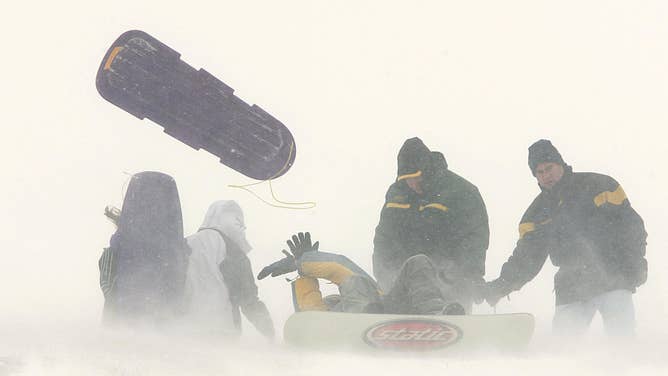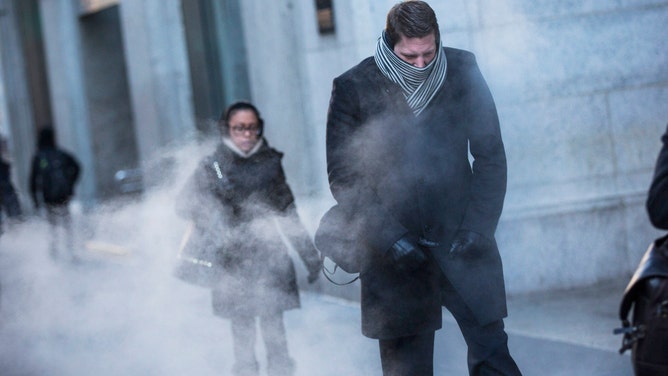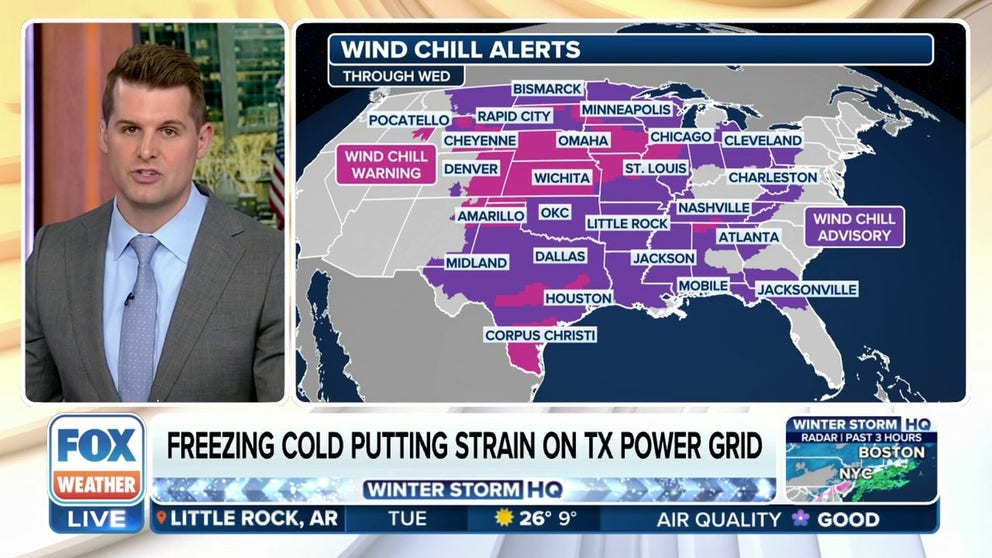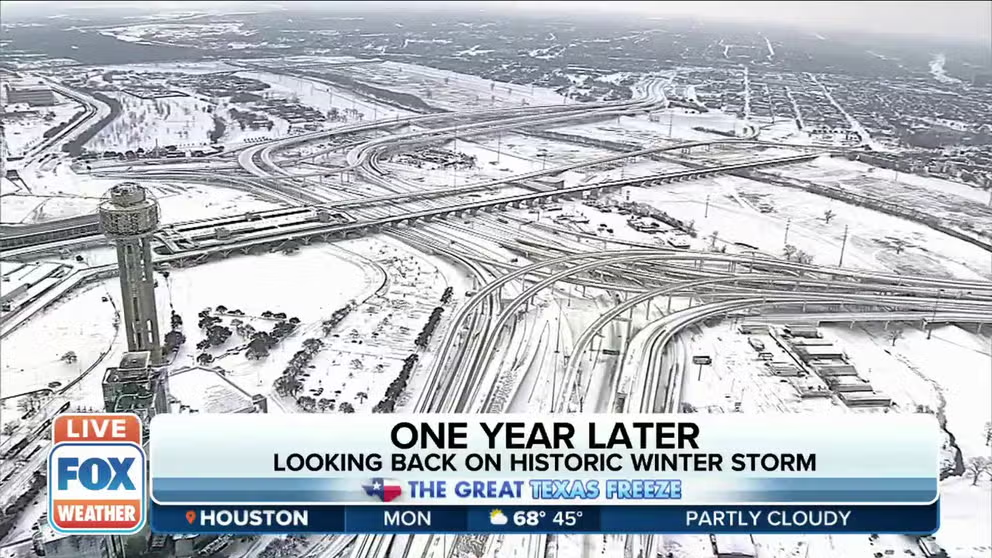Deadly cold spreads throughout US with freezing temperatures felt from border to border
Unfortunately, the cold temperatures have turned deadly. At least two people have died from a cold-related illness in Oregon. Another three people in Milwaukee died from apparent hypothermia.
Arctic blast puts South under deep freeze
It's the coldest since the Great Freeze of February 2021 as frigid temperatures are in place from border-to-border across the nation. It's so cold that the National Weather Service has issued Wind Chill Advisories and Warnings from the Canadian border to the Mexican border.
Temperatures are at their lowest since the Great Freeze of February 2021, with frigid conditions spanning the entire country, the FOX Forecast Center said.
The temperature dropped to -10 degrees in Kansas City on Tuesday morning. This is the fourth day in a row that the temperature has reached -10 degrees or lower, making it the second-longest stretch of such cold weather in the city's 136 years of records, the National Weather Service said. The longest streak on record was five days, from Dec. 18-22 in 1983.

File: Strong winds along with the cold make one sled hard to hold onto in Illinois.
(JEFF HAYNES/AFP / Getty Images)
Unfortunately, the cold temperatures have turned deadly. According to a report from FOX 12 in Portland, Oregon, at least two people have died from a cold-related illness. Another three people in Milwaukee died from apparent hypothermia over the weekend, according to FOX 6 Milwaukee.
With brisk winds still impacting the nation's midsection, wind chill alerts mean the combination of cold and wind could be dangerous to anyone caught in the elements. Officials have already canceled school due to the cold Tuesday from Detroit to Austin, Texas.

(FOX Weather)
It's so cold that the National Weather Service has issued Wind Chill Advisories and Warnings from the Canadian border to the Mexican border. Temperatures are 25-35 degrees below average for mid-January, which is already one of the coldest months for most places.
Fortunately, the coldest air is already behind us as temperatures begin to moderate a bit in the next 48 hours, the FOX Forecast Center said. The intensity of the cold air will decrease as temperatures become only 10-20 degrees below average, but the long duration of this arctic blast could stress people and infrastructure.

(FOX Weather)
Dozens of additional record lows will fall through Wednesday, primarily in the Plains and the South. Even the Gulf Coast could experience temperatures well below freezing, requiring the issuance of Hard Freeze Warnings.
These periods of prolonged subfreezing temperatures could become problematic as some locations will not climb above freezing for several days.

(FOX Weather)
Another blast of cold air surges south out of Canada later this week, so millions of Americans will feel temperatures dip near zero again for Thursday and Friday, the FOX Forecast Center said.
Warmer weather is on the horizon, but it could be at least a week before temperatures return close to average.
Frigid temperatures strain Texas' electric grid
The Electric Reliability Council of Texas (ERCOT) warned of strains to the state's electric grid from high demand for heat as temperatures drop below freezing across much of the Lone Star State.
On Monday, ERCOT issued a Conservation Appeal for Tuesday morning due to a winter storm and cold weather.
Texas' electric grid became the subject of weeks of national news during a winter storm and arctic blast in February 2021. Millions across the state were left without electricity for days as temperatures dropped to their lowest levels in a decade. More than 200 people died because of what some now call the Great Texas Freeze.
An investigation by federal energy regulators blamed the grid failure on frozen equipment at power plants and natural gas facilities. More than 20 power plants in Texas did not have any winterization plans despite standards recommending they do so, investigators found.
Forecasters don't believe this blast of cold air will cause widespread problems in Texas because the duration of the freezing weather is much shorter than in 2021.
COLD WEATHER SAFETY: HOW TO STAY SAFE IF YOU ARE AFFECTED BY CRIPPLING POWER OUTAGES
Looking back at The Great Texas Freeze
FOX Weather multimedia journalist Robert Ray is in Houston, Texas, as we reflect on The Great Texas Freeze.
Why has the winter been mild, and what is changing that?
El Niño is partly to blame for the mild winter so far in the U.S. During an El Niño winter, the temperatures in the northern U.S. are usually warmer and drier than average, according to NOAA. The jet stream generally flows from west to east.
"So we were pretty lucky for a good chunk of the month of December and even into the very beginnings of January, but now it's been a kind of page turn, if you will, a complete flip of the script," FOX Weather Meteorologist Kendall Smith said. "Because now we're starting to see that cold air that has been locked in place over Canada and over the Arctic. That's going to be starting to change."
CAN COLD WEATHER MAKE YOU SICK?

File: A man clenches his fists while walking past a steam vent on the morning of January 7, 2014 in New York, United States. A polar vortex has descended on much of North America, coming down from the Arctic, bringing record freezing temperatures across much of the country.
(Andrew Burton / Getty Images)
A few weeks ago, the Arctic underwent minor, sudden stratospheric warming. Air in the stratosphere, a layer in Earth's atmosphere about 19 miles above the surface, warmed by 55 degrees in a six-day period, wrote Amy Butler of NOAA's Chemical Sciences Laboratory. That slowed the polar vortex winds.
About every other year, weather events in the lower atmosphere send strong atmospheric waves into the stratosphere, which interact with the polar vortex.
The polar vortex is a band of strong winds circling the North Pole. A constant, stable spin of those winds keeps the arctic air locked in place. When the winds slow and become unstable, just like a top, the vortex wobbles. Stratospheric weather leads our weather by as much as two weeks, according to Judah Cohen, Atmospheric Scientist from Verisk Atmospheric and Environmental.

The polar vortex on the left was from January 1 and the right is the forecast for January 14 showing the cold air stretching south.
(NOAA Climate.gov)
"A disruption of the polar vortex called a sudden stratospheric warming, where you have a very dramatic warming at the North Pole in the stratosphere, and the polar vortex then migrates south, off where it's normally positioned on the North Pole, to the south," said Cohen. "And the cold air then is able to move south and then, at the surface, that often will manifest itself in a negative Arctic Oscillation."
During the Great Texas Freeze in February 2021, the Arctic Oscillation was at its lowest, most negative reading in eight years. Nor'easters are also linked to the negative Arctic Oscillation phase, according to NOAA.

